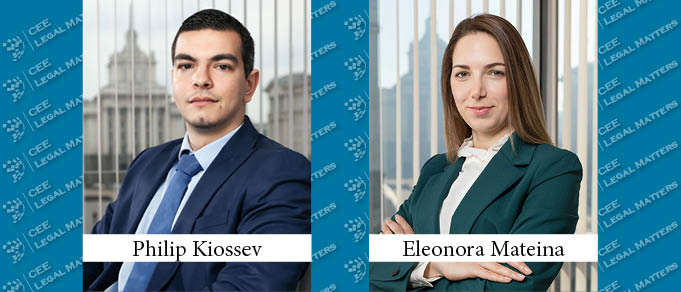In January 2022, the new Regulation (EU) 2021/2282 of the European Parliament and the Council of the European Union of 15 December 2021 on health technology assessment (the "HTA Regulation") entered into force on the territory of the European Union. The HTA Regulation aims to harmonize (but not to fully centralize) the currently fragmented procedure for assessing the health technologies of innovative medical therapies entering the European Union market in different European countries. The HTA Regulation shall begin to apply in stages from 12 January 2025 and the European Commission has already approved an implementation plan until that date, which includes mainly the establishment of the information resources needed for its operation, the creation of new supranational bodies to participate in the application of the Regulation and training of the competent national authorities.
Purpose and scope of the HTA Regulation
The main purpose of the HTA Regulation is to introduce a level of harmonization between HTAs performed by different Member States, which will (i) reduce the administrative burden for health technology developers (most often innovative pharmaceutical companies) by providing that developers should submit only one application and only one set of documents for the conduct of an HTA; (ii) increase legal certainty for health technology developers by setting up mechanisms to prevent arbitrary refusal to issue a positive assessment of an HTA by a Member State in the presence of a positive opinion at the central level (although, as described below, member states will preserve competence to refuse due to national considerations).
Competent authority
For the purposes of this centralization, the HTA Regulation establishes a new European supranational body - the Member State Coordination Group on Health Technology Assessment (the "Coordination Group"). The Regulation defines the broad competencies of the Coordination Group, the main ones being to: (i) adopt methodological guidance on joint work, (ii) adopt detailed procedural steps and the timeframe for the conduct of joint clinical assessments and joint scientific consultations; (iii) establish and coordinate subgroups which exercise the main part of the responsibilities of the Coordination Group, namely - adopt (i) joint clinical assessments; (ii) joint scientific consultations; (iii) identification of emerging health technologies; (iv) development of methodological and procedural guidance.
Responsibilities of the Coordination Group - conducting joint clinical assessments
The main responsibility of the Coordination Group is to carry out joint clinical assessments, which is similar to the issue of a framework assessment of health technologies at the European level.
Not all types of health technologies fall within the scope of the obligation to carry out a joint clinical assessment at the European level. Additionally, this responsibility does not begin to apply to all types of health technologies at the same time. The following health technologies fall within the scope of joint clinical assessments:
- Medicinal products listed in Annex № 1 to Regulation (EC) № 726/2004 of the European Parliament and of the Council of 31 March 2004 (for example: medicinal products with recombinant DNA technology, medicinal products for cancer, diabetes, AIDS, autoimmune and viral diseases, etc.). These are medicinal products that are authorized for use under a centralized procedure;
- Medicinal products with a new active substance for which there was no authorization in the Community until the date of entry into force of the Regulation;
- Medicinal products for which a new therapeutic indication has been approved, in which case a joint clinical assessment report has been published;
- Class IIb or III medical devices for which (i) a clinical assessment procedure has been performed under Art. 54 of Regulation (EU) 2017/745 of the European Parliament and of the Council of 5 April 2017; (ii) the European Commission has adopted a decision, establishing that such medical devices are subject to a joint clinical assessment based on the criteria set out in the HTA Regulation (among which are unmet medical needs, first in class, major Union-wide added value, etc.) ("Selection Decision");
- In vitro diagnostic medical devices classified as class D, for which (i) a conformity assessment procedure under Art. 48 (6) of Regulation (EU) 2017/746 of the European Parliament and of the Council of 5 April 2017 has been performed; (ii) the European Commission has adopted a Selection Decision;
The Regulation provides a step-by step introduction of mandatory joint clinical assessments on different dates for different product types:
- From 12 January 2025 - for medicinal products with new active substances for the treatment of cancer and advanced therapy medicinal products pursuant to Regulation (EC) № 1394/2007 of the European Parliament and of the Council, as well as for medical devices listed in a final Selection Decision of the EC;
- From 13 January 2028 - for orphan medicinal products pursuant to Regulation (EC) № 141/2000 of the European Parliament and of the Council;
- From 13 January 2030 - for all other types of medicinal products falling within the scope of the HTA Regulation.
The HTA Regulation describes in detail the procedure for initiating a joint clinical assessment, the obligations, and deadlines for the submission of evidence by health technology developers, the adoption and discussion with stakeholders of a draft assessment report and the approval of a final joint clinical assessment report. The scope of the assessment shall include, in particular, all relevant assessment parameters in relation to: (i) the patient population; (ii) the intervention or interventions; (iii) the comparative alternative or alternatives; (iv) health outcomes.
The most important consequence of the adoption of a final joint clinical assessment report is for national authorities, while adopting a national HTA. In summary, there are several limitations on the powers of national authorities, which shall:
- give due consideration to the published joint clinical assessment reports and all other information available on the IT platform of the Coordination Group. This shall not affect Member States’ competence to draw their conclusions on the overall clinical added value of a health technology in the context of their specific healthcare system and to consider the parts of those reports relevant in that context. By argumentum e contrario, we would conclude that national authorities are obliged to adopt conclusions on the clinical added value in cases that do not depend on the specifics of the national healthcare system;
- annex the dossier submitted by the health technology developer to the Coordination Group, as well as the published joint clinical assessment report on to the national HTA report;
- not request at the national level information, data, analyses or other evidence that has been submitted by the health technology developer at Union level;
- Immediately share any information, data, analyses and other evidence with the Coordination Group that they receive from the health technology developer.
Simply put, the adoption of a positive joint clinical assessment report shifts the burden of proof on the health technology assessment from the developer to the national authority, i.e., the national authority must explicitly and in detail argue why it refuses to issue a positive HTA for a technology, which is positively assessed at Union level. Respectively, in the absence or weakly substantiated statement on the reasons for such a negative HTA by the NCPRMP (for medicinal products) or the NHIF (for medical devices), the health technology developer could appeal before the courts.
Other responsibilities of the Coordination group
In addition to the Coordination Group's responsibility to adopt joint clinical assessments (similar to Bulgarian Health Technology Assessments), the HTA Regulation provides for the Coordination Group to conduct several additional types of assessments / consultations that are currently absent in Bulgarian legislation:
- Joint Scientific Consultations - The purpose of the Joint Scientific Consultations is the ongoing exchange of information with health technology developers on their plans for the development of a specific health technology. These consultations facilitate the generation of evidence that meets the requirements for appropriate evidence for the subsequent joint clinical assessment of the health technology. A health technology shall be eligible for joint scientific consultation where it is likely to be the subject to joint clinical assessment and where the clinical studies and clinical investigations are still in the planning stage. Joint scientific consultations do not produce a legally binding result, but are useful for pharmaceutical companies and government bodies, as the exchange of information on a product in advance of the forthcoming HTA, increases the chances for a positive assessment.
- Identification of emerging health technologies - The Coordination Group shall ensure the preparation of reports on emerging health technologies expected to have a major impact on patients, public health or healthcare systems. Those reports shall in particular address the estimated clinical impact and potential organizational and financial consequences of emerging health technologies for national healthcare systems;
- Voluntary cooperation services - The HTA Regulation provides that the Coordination Group shall be used to facilitate the cooperation and the exchange of scientific information between Member States in the field of: (i) non-clinical assessments on health technologies, (ii) collaborative assessments on medical devices and in vitro diagnostic medical devices, (iii) the HTA of products other than medicinal products, medical devices or in vitro diagnostic medical devices, (iv) the provision of additional evidence necessary to support HTA, (v) clinical assessments of health technologies, for which a joint clinical assessment is not yet initiated and health technologies are not subject to a joint clinical assessment. Regarding the above mentioned services, it could be said that the cooperation through the Coordination Group is on a voluntary basis, similar to the cooperation through the already repealed Directive 2011/24/EU.
By Philip Kiossev, Senior Associate, and Eleonora Mateina, Managing Associate, Tsvetkova Bebov & Partners



